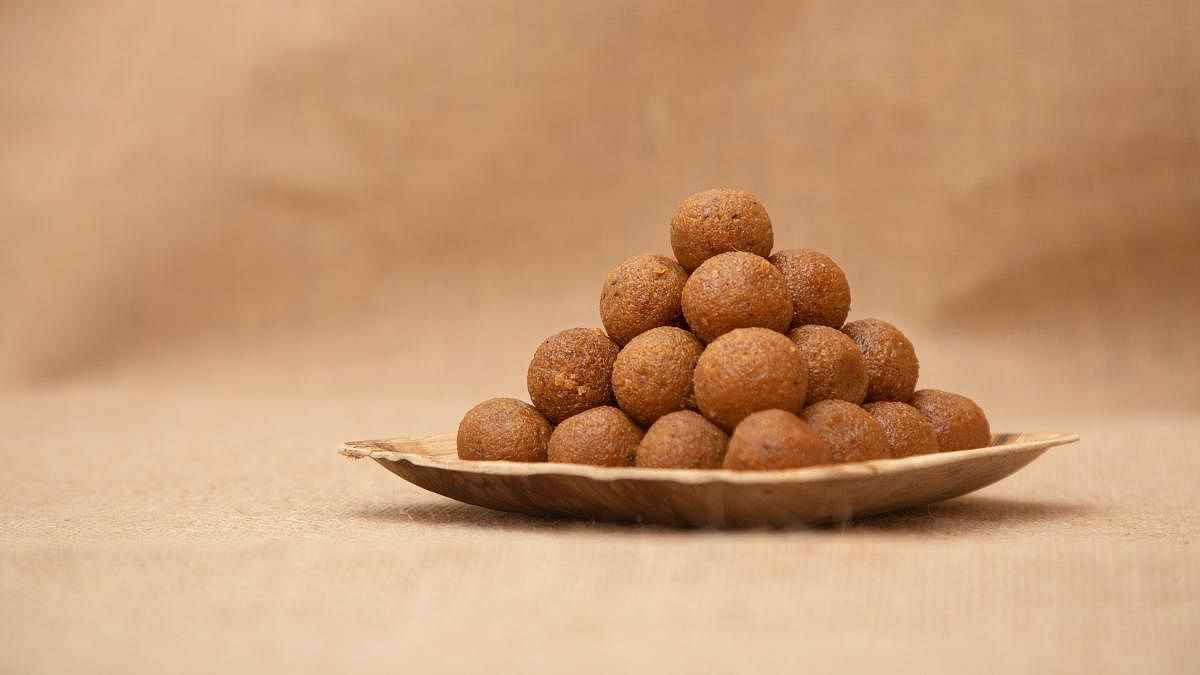
In India, we celebrate most of the auspicious occasions with sweets. Of all the Indian sweets, one sweet that has stood out from the rest in each state in a unique yet delicious way is the laddoo. From the motichur laddoo, originally popular in Rajasthan and Uttar Pradesh, coconut laddoo from down South, the Assamese til laddoo to the famous Maharashtrian dinkache laddoo — each region-specific laddoo has its distinct taste and brings nostalgic memories to everyone’s mind. Whether it is an engagement, wedding, the birth of a child, or the beginning of a new business, this humble sweet has found its way into people’s mouths and hearts. In the fast-paced world we live in, we are constantly looking for quick meals that are healthy and easy to carry with us. So, laddoos made with dry fruits and nuts are the best solution for this problem. It’s a known fact that dry fruits are highly nutritious and rich in proteins, vitamins, dietary fibre, and minerals. To this already power-packed laddoo add some edible gum or gondh and you can even skip a meal as it is a wholesome meal in itself. In India, new mothers are offered nutritious food and gondh ke laddoos for the first 40 days after childbirth to gain strength and nourishment. If we dig deep into history way back in the 4th century BC, laddoos were initially invented for medical purposes by the father of Indian surgery and medicine, Susruta. We all relish gondh ka laddoo during the winter, but little did we know that laddoos were used as an antiseptic to treat patients. The gondh ka laddoo keeps the body warm and is used widely in north India during the winters. It also helps stimulate the immune system, lubricate the joints, reduce back pain and joint pains; women can benefit highly by consuming one laddoo a day during winter. However, a word of caution — do consume these laddoos in moderation as it may lead to constipation and mild abdominal discomfort if consumed in excess.
(The writer is author of the cookbook Manna: Your Guide to Indian & Continental Cooking which is a result of her culinary journey during which she documented some of the most sought-after heritage recipes of India and elsewhere.)
Warmth of laddoos
Whole moong peendi laddoos are a perfect healthy snack for cold winter evenings. Whenever there’s a wedding in the family, my nani would prepare the whole green moong peendi laddoos a week before the big day. Everyone would enjoy these delicious laddoos as they are full of dry fruits, edible gum, and homemade ghee. One can use unrefined sugar to make it more healthy.
Ingredients
Whole green moong dal: 2.5 kg
Sugar/Jaggery: 2.5 kg (powdered)
Dry fruits of your choice like almonds, cashews, pistachios, walnuts, magaz (dried melon seeds), makhana (foxnuts), dry coconut, chironji (charoli): 200 gms each
Gond (edible gum): 150 gm
Ghee: 500 gm
Cardamom powder: 2 tsp
Saffron strands: a few
Method
Soak almonds, pistachios, and walnuts for 2-3 hrs. Peel and set aside.
Wash moong dal and spread it on a clean cloth for drying. You can sun dry or
air dry the same.
Dry roast the moong dal in batches on medium flame.
Cool the moong and powder it in a grinder.
Heat half the ghee in a pan. On medium flame, fry the dry fruits individually.
Fry the foxnuts in the end as they absorb more ghee.
Next, fry the grated dry coconut.
Either powder all the dry fruits except the fried dry coconut or crush them in a
motor and pestle. Powder the edible gum and set it aside.
Take 100 gms ghee and roast the moong powder on low flame for 15-20
minutes or till the raw smell disappears.
Mix the roasted moong powder with dry fruits and edible gum.
Add cardamom powder, crushed saffron strands, powdered sugar, and mix
all the ingredients. You can adjust sugar according to your taste
Add the remaining melted ghee. Mix and see if you can bind and make a
laddoo.
If required, you can add more melted ghee.
Note: Make your laddoos healthier by adding powdered jaggery or raw sugar instead of regular sugar.
(Recipe courtesy Arshia Farooqui)
One ingredient, one recipe
This column celebrates food and explores the possibility of forming an invisible chain that will bind us together as a family. Picking the most important ingredient of ‘love,’ we would want readers to send us a unique recipe that has either a childhood memory attached to it or, an interesting fact, or even a food philosophy they learned from their ancestors. We will hand-pick one unique recipe and publish it along with this column the following month. Please share your heritage recipe and story in 300 words with “Food Family: Love” mentioned in the subject line to dhonsunday@deccanherald.co.in by December 27.